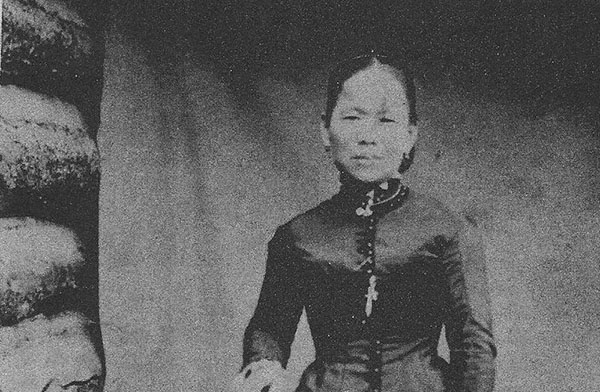The Idaho resident’s unusual life was partly emblematic of the Chinese experience in the Old West.
The life of Polly Bemis is shrouded in myth and mystery; her exact date of birth is unknown, as are many details of her youth. When she died in 1933, the story of this erstwhile “poker bride” — who had lived out her days married to a white man along the banks of a body of water known as the “River of No Return” — was front page news. Her story has since been the basis for novels, films, and paintings, and the cabin she was living in when she died is now a museum. But as many researchers have discovered, separating the real Polly Bemis from the legend has been next to impossible.
Chinese Prostitutes in the Old West
Shortly after gold was discovered at Sutter’s mill in California in 1849, people from all over the embryonic United States flooded west to try to improve their fortunes. News of the strikes also traveled much further afield, and many Chinese peasants eking out a living along the Pearl River delta also heeded the call to possible riches. Thousands of Chinese men arrived by ship at the port of San Francisco, and immediately streamed outward to work the mines or perform other services needed by miners, from running restaurants to laundering clothes.
The immigration of Chinese women was another issue. With the exception of a few who were the “respectable” wives of wealthy Chinese merchants, nearly all the women coming into the west from China were prostitutes. Often the girls’ families in China would sell the girls into sex slavery for extra money; other times the girls were simply lured onto ships with promises of work, or kidnapped outright. However the girls were brought to California, very few, it seems, came of their own volition.
Polly Bemis Arrives in San Francisco
According to some accounts, Polly was born Lalu Nathoy around 1853. By her own much later account, she was kidnapped from her home in China and smuggled into San Francisco in a padded crate. There, she was purchased as a concubine for $2,500, by a saloon owner known as Hong King (though this is by no means certain). In this respect, she may have been relatively lucky, for many Chinese girls smuggled into the U.S. as prostitutes were forced to ply their trade in filthy, cramped “cribs,” where they often died young of venereal diseases or by violence.
The Legend of the Poker Bride
Very little is known of Polly’s early years in the United States; presumably she served as a concubine and possibly a housekeeper to her master for several years. But sometime around 1872, the legend around her began to blossom.
According to the lore, a saloon owner and cardsharp named Charlie Bemis was playing poker with a Chinese man variously identified as either Hong King or Big Jim. Bemis had cleaned his opponent out, and Hong King soon said he had nothing left to bet except for his beautiful Chinese slave girl. As it turned out, Bemis ended up winning her too, and later took Polly to his cabin in the Warren mining camp in Idaho.
The Marriage of Charlie and Polly Bemis
This odd couple lived together for a very long time, with Polly evidently running a boarding house and allegedly selling sexual favors on the side. In 1894, Charlie took the almost unthinkable step of marrying the 40-year-old Polly; at that point in time, anti-Chinese sentiment was at its height, and miscegenation was against the law.
A few theories have been proposed as to why Charlie chose to marry his Chinese “poker bride.” The more romantic have the pair falling deeply in love after Polly nursed Charlie back to health after he’d been shot in the face. The more pragmatic option posits that Charlie was responding to the 1892 Geary Act, which forced Chinese immigrants to carry a resident certificate or risk deportation. Polly’s marriage to Charlie netted her a certificate in 1896.
Polly’s Death and Continuing Legend
Charlie Bemis died in 1922, and Polly was left to tend the house and gardens along the Salmon River with only the help of her two neighbors. Long before her death, she had become something of a fixture in the Idaho territory, and many people stopped to visit her in their travels. She was always friendly and hospitable, and despite being unable to read or write, could speak in broken English.
Shortly before she died in 1933, she came down from her remote home to Grangeville, the county seat, and saw the way the world had changed: Automobiles, trains, radios, electric lights, and motion pictures were new and delightful experiences for her. The newspapers called her “Rip Van Winkle,” as she had lived in the mountains so long that the world had passed her by. As much as she liked the new innovations, however, she was soon heading back into the mountains to the only real home she had ever known, where she died of a stroke at the age of 80.
Sources:
- Corbett, Christopher (2010). The Poker Bride: The First Chinese in the West. Atlantic Monthly Press. ISBN: 9780802119094.
- Wegars, Priscilla. “Asian American Comparative Collection: Ongoing Research”. Asian American Comparative Collection: Ongoing Research.








